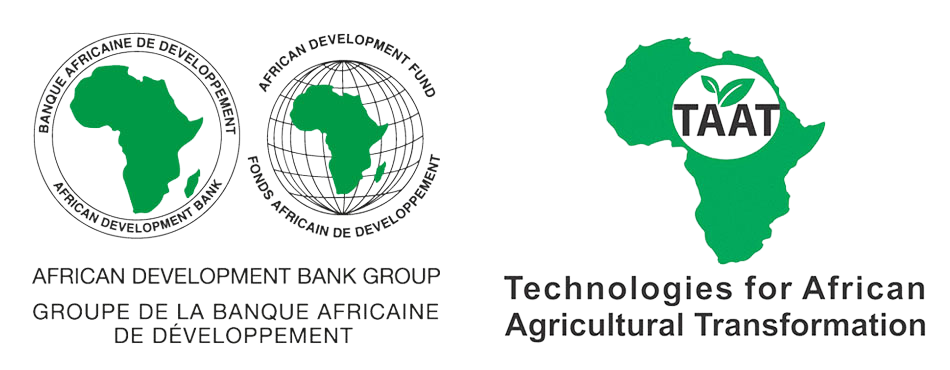TAAT and the imperatives of transforming agriculture in Sierra Leone

Sierra Leone has more than 5.4 million hectares of arable land, including boli lands, mangroves, inland valley swamps, and riverine grasslands suitable for growing rice. and other crops. However, the total area cultivated for maize is 7,538 ha, while cassava is cultivated at 155,727 ha. This puts the total area under cultivation at about 10% of the fertile and diverse lands.
Limitations to domestic production continue to exist principally as a result of insufficient access to quality seeds (owing to the absence of a formal seed system) around which other practices are applied Although poor access to improved seeds is a prime factor hindering productivity, there are other limiting constraints, which include limited success to fertilizer, pesticides, and mechanization services); low use of improved production technologies, weak institutional and human capacities, and low access to affordable finance.
As a result of these constraints, Sierra Leonean farmers cannot compete in the global market, as they struggle with low crop yield and productivity. Over the last decade, several initiatives have supported the Sierra Leonean seed sector.
The interventions include the rice seed system and cassava Semi Autotrophic Hydroponics infrastructural support by the Technologies for African Agricultural Transformation (TAAT) and the Building an Economically Sustainable Cassava Seed System, Phase 2 (BASICS-II) Project.
Sierra Leone has also received support from the African Development Bank, the Islamic Development Bank (IsDB), the World Bank, USAID and other Technical and Financial Partners regarding grants to support the agriculture sector.
Previous interventions in Sierra Leone
TAAT intervened in Sierra Leone through its Rice and Cassava Compacts. In 2021/2022, support was provided through the supply of 1.5 tons of breeder and 30 tons of foundation rice seed for further multiplication by the Sierra Leone Agricultural Research Institute (SLARI) and the private sector, respectively.
This support engaged SLARI, the private sector, and the Sierra Leone Seed Certification Agency (SLeSCA) to advance hands-on seed multiplication, quality control practices, and capacity development.
The Sierra Leone Agri-Business Rice Value Chain Support (SLARiS) Project, in partnership with the IsDB- Regional Rice Value Chain Development Project (RRVCDP), distributed the 101.52 tons of certified seed received under the TAAT Rice Compact facilitation to 1,692 farmers.
The paddy yields of these farmers increased by 25−30% compared to farmers who used the local or old varieties, with 2,225,000 Leones as net revenue per hectare. An e-register has been established with 13,851 households and their locations and communities captured.
Through the Special Emergency Assistant Facility (SEAF), TAAT facilitated the delivery of 57 MT of rice seed and 10 mt of maize seed in the 2021/2022 cropping season.
TAAT, through AfDB’s Africa Emergency Food Production Facility (AEFPF), has registered 6,000 beneficiaries, with an anticipated 8,950 beneficiaries in view. The support and supervision missions with AfDB in Sierra Leone have strengthened partnerships with agricultural development stakeholders and seed industry actors. In addition, the seed system has been regularly reviewed, and recommendations have been provided to improve it.
TAAT has rehabilitated and equipped SLARI’s laboratory in Njala, equipped the laboratory with solar power and provided training to staff to maintain the laboratory and to produce cassava seed using the SAH technology. The TAAT Cassava Compact supported the establishment of seed farms in seven communities, demonstrations on good agricultural practices (GAP), and revitalized the processing facilities belonging to community associations processing cassava into garri, high-quality cassava flour (HQCF), and other value-added products.
TAAT has established a register of cassava value chain actors in the country and developed partnerships for scaling cassava technologies.
In the last three years, the Building an Economically Sustainable Cassava Seed System, Phase 2 (BASICS-II) has developed a model that connects actors in the seed value chain, while ensuring that there is a constant supply of improved disease-free varieties to farmers and at the same guaranteeing sustainability and shared economic prosperity among the seed actors. In Nigeria and Tanzania, the BASICS model has led to the establishment of more than 1,000 seed entrepreneurs, doubled cassava yield, and created wealth among cassava farmers. BASICS-II is working closely with SLARI to catalyse the model to the West African nation.
The project built the capacity of SLARI’s staff in early-generation seed production and supported resource mobilization for the seed system. At this summit, BASICS-II will leverage its converging power to bring all the critical actors to a round table to help Sierra Leone tap additional financing for its seed sector.
New Interventions facilitated by TAAT in Sierra Leone
For the Africa Emergency Food Production Facility (AEFPF), the national priorities under this initiative are to support the production of improved early-generation (breeder and foundation) seeds by SLARI in collaboration with AfricaRice Centre; support the production and distribution of certified seeds and support seed multiplication centres in Kobia and Kenema, including equipment; rehabilitate two seed varietal maintenance centres; support Women in Agriculture and Nutrition to expand nutritious food recipes; train lead farmers and technicians on improved farming techniques, and train women farmer associations on improved farming and marketing techniques.
With regards to the Feed Africa Dakar 2 Summit, the Sierra Leone Country Compact with a budget of USD 200 million, estimates that about 1,875 tons of seed rice will be required annually over the period of the compact to cultivate the 30,000 ha. Over the next five years, the Compact will provide about 9,375 tons of seed rice for cultivation, and about 7,500 tons of fertiliser will be required annually, translating into 37,500 tons over five years. The Compact seeks to increase the productivity level of rice to about 3 to 4 t/ha. With up to three cropping cycles possible and increased yield, this investment will add at least 270,000 tons of paddy rice each year, contributing about 15% of the rice consumption requirement in the country.
About 490,000 hectares are available for cassava, and the Sierra Leone Country Compact seeks to increase the national average yield from 17 t/ha to about 25 t/ha. With assistance from TAAT, the Country Compact will pilot 50,000 ha and upscale to cover 100,000 ha of cassava production in 10 districts to process cassava into HQCF and starch.
The Compact will also invest in livestock with more maize and soybean to be processed into livestock feed. The Farm Service Centre (FSC) will provide mechanized services to farmers, and technology transfer will be facilitated using the e-Extension and digital data management system. In addition to these new developments, AfDB, IsDB, USAID, and other donors are investing in new projects with converging objectives of addressing food insecurity and poverty.
The momentum behind the agricultural transformation in Sierra Leone and Africa is at an all-time high. Promoting and adopting improved, climate-smart, and high-yielding varieties and good agronomic practices will usher Africa into a new era of agricultural productivity intended to put the continent on a pathway to food system resilience and prosperity.
The African Development Bank, through TAAT, is accelerating the momentum in addressing transversal issues in African agriculture, improving soil fertility, discovering the untapped potential for improved water management, coordinating and advocating agricultural research initiatives, providing the necessary policy support, attracting African youth in agribusiness, and helping farmers respond to transboundary plant pests and diseases such as Fall Armyworm.
The path to feeding Sierra Leone converges at an interdependent relationship between seed and agronomy. This convergence, if meticulously harmonised with innovative solutions from research alongside support for farmers and public research and extension services, can usher Sierra Leone into an era of food systems resilience and nutrition security.


